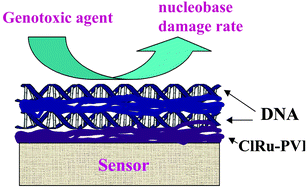Genotoxicity sensor response correlated with DNA nucleobase damage rates measured by LC-MS
Abstract
Responses from “reagentless” DNA-based electrochemical toxicity sensors to DNA alkylating agents styrene oxide (SO), diepoxybutane (DEB), and methyl methanesulfonate (MMS) were compared to formation rates of total alkylated nucleobases in DNA measured by LC-UV-MS. Sensors utilized a catalytic metallopolymer in DNA films previously exposed to the damage agents. To achieve adequate sensitivity, LC-UV-MS analyses were done on DNA in solution reacted with the damage agents, and subsequently hydrolyzed to nucleosides with enzymes. Sensor response correlated well with nucleobase-adduct formation rates obtained by the molecule-specific analyses. Results confirm that the metallopolymer–DNA film sensors can be used to estimate relative DNA damage rates from nucleobase adduct-forming chemicals. Results from both methods correlated well with animal genotoxicity as estimated by TDLo values, the lowest dose producing carcinogenicity, in mice and rats. These sensors should be useful for rapid, inexpensive screening of moderately and severely genotoxic new chemicals.


 Please wait while we load your content...
Please wait while we load your content...